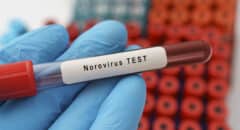
The big-budget film Hidden Figures came out nationwide in 2017. Starring Taraji P. Henson, the film followed the life of real-life Katherine Johnson, the African American mathematician who calculated flight trajectories for Project Mercury and the 1969 Apollo 11 flight to the Moon. The film also features Octavia Spencer and Janelle Monáe, who play Dorthy Vaughan and Mary Jackson respectively. Both of which were also instrumental in helping the U.S. win the battle to get the first man on the moon.
Now, in 2020, NASA Administrator Jim Bridenstine announced that the agency’s headquarters building in Washington, D.C., will be named after Jackson, now being called the Mary W. Jackson NASA Headquarters.
Jackson was born on April 9, 1921, the daughter of Ella and Frank Winston. She grew up in Hampton, Virginia, and attended high school there, where she excelled. She earned her Bachelor's degrees in mathematics and physical science from Hampton Institute in 1942. Jackson spent twenty years as a Girl Scout leader and was noted for helping black children in her community to create a miniature wind tunnel, yes even at that young age.
After graduating from the Hampton Institute, Jackson taught school in Maryland. In 1943, she became a secretary and bookkeeper for the USO. She joined the National Advisory Committee for Aeronautics (NACA), which later became the National Aeronautics and Space Administration (NASA), in 1951. She began her career there as a research mathematician, or computer, at the Langley Research Center in her hometown of Hampton, Virginia. In 1953 she moved to the Compressibility Research Division.

Jackson died in 2005, leaving two children, but her legacy lives in everything she's done that it is still being used today.
After five years at NASA and after taking several additional courses, she joined a special training program and was promoted to aerospace engineer. She then worked to analyze data from wind tunnel experiments and real-world aircraft flight experiments at the Theoretical Aerodynamics Branch of the Subsonic-Transonic Aerodynamics Division at Langley. Her goal was to understand air flow, including thrust and drag forces. Many years later, she was assigned to work with the flight engineers at NASA. She ultimately authored or co-authored 12 technical papers for NACA and NASA.
Yes, twelve! WOW!
Jackson worked to help women and other minorities to advance their careers, including advising them how to study so that they could change their titles from "mathematician" to "engineer" to increase their chances of promotion, which she did herself.
After 34 years at NASA, Jackson reached the highest level of engineer that was possible for her without becoming a supervisor. She decided to take a pay cut and change positions to become an administrator in the Equal Opportunity Specialist field. After undergoing training at NASA Headquarters, she returned to Langley where she worked to make changes and highlight women and other minorities who were accomplished in the field.
She served as both the Federal Women’s Program Manager in the Office of Equal Opportunity Programs, and as the Affirmative Action Program Manager. She worked at NASA until her retirement in 1985.
Here's to more "hidden figures" coming out of hiding and shown to the world just how awesome we are.








